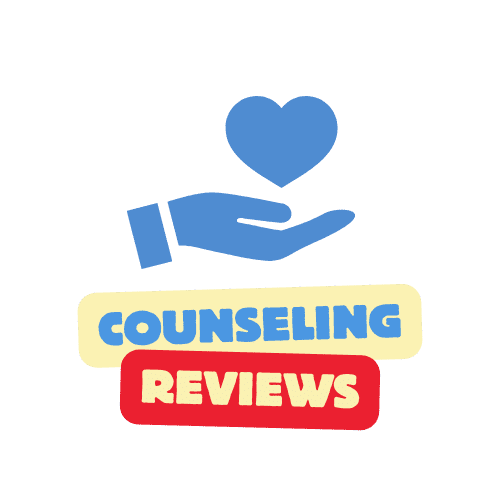We had recently written about eye movement desensitization and reprocessing (EMDR) therapy in detail. We concluded that it can treat certain types of traumatogenic conditions such as PTSD, specific phobias, etc. It works well with individuals who find it challenging to communicate with therapists.
Although it includes traditional talk therapy, EMDR focuses on bodily sensations, bilateral stimulation such as horizontal eye movements, and processing of emotions associated with past trauma. It requires extensive training and certification, but many individuals practice EMDR independently.
Many people often ask mental health professionals if EMDR compares with CBT in terms of efficacy and if they should choose one over the other. Before we compare and differentiate between EMDR vs CBT, let’s quickly recap how EMDR and CBT work.
What is Eye Movement Desensitization and Reprocessing (EMDR)?
EMDR is a highly structured psychotherapy that attempts to address and process traumatic memories.
While other types of therapy focus on cognitions and behaviors, EMDR specifically addresses traumatic memories. It is based on the premise that bilateral stimulation reduces the intensity of traumatic memories by helping the individual to distract themselves.
Therapists usually ask the clients to recall traumatic incidents while rhythmically their fingers or horizontally moving their eyes. Francine Shapiro, the psychologist who developed this treatment, believed that encouraging bilateral stimulation while recalling traumatic memories reduced their vividness and negative quality.
The process of EMDR
The process of EMDR is highly structured. A typical treatment session looks like this:
-
Understanding your problem and planning your treatment
The first step is to understand your trauma by taking a detailed case history. The therapist may also administer initial assessments to gather information which helps them to devise a treatment strategy tailored for you.
-
Orientating you towards EMDR
Psychologists often describe this step as “psychoeducation.” In this step, the therapist helps you understand what EMDR is and what you can expect in the subsequent sessions. They may explain what bilateral stimulation is and why you need to perform finger tapping and eye movement exercises.
-
Measuring your trauma
The third step helps the therapist to understand your trauma in greater detail. They often use two scales to gain a deeper understanding of your psychopathology. The Validity of Cognition (VOC) scale helps the therapist to assess the nature of your thoughts. In contrast, the Subjective Units of Disturbance (SUD) scale allows them to understand how trauma affects you emotionally.
-
Helping you overcome trauma
The fourth step is desensitization, in which the therapist asks you to recall a traumatic incident while inducing bilateral stimulation through rhythmic finger tapping or horizontal eye movements. You are requested to narrate your thoughts; when they get too disturbing, you are asked to stop and perform a relaxation exercise. This process is continued until the traumatic memory is no longer bothersome.
-
Replacing negative thoughts with positive ones
The fifth step, “Installation,” helps you identify your negative thoughts and replace them with preferred thoughts and beliefs. While this step closely resembles CBT, EMDR focuses more on memories than thoughts and behavior.
-
Monitoring physical sensations
Most therapies do not focus on bodily sensations such as shivering, shaking, tingling, and other unpleasant experiences while recalling traumatic incidents. However, EMDR helps you monitor these sensations while performing bilateral stimulation until they reduce intensity.
-
Closure, and re-evaluation
Eventually, you can find closure when your traumatic memories no longer bother you. Read our previous article for a detailed evaluation of EMDR.
Preparation for EMDR therapy
For the first session, it helps to make notes about your trauma so that you do not forget all the critical incidents that occurred during your childhood. This information is necessary for your therapist to understand your trauma better. You don’t need to prepare for the subsequent sessions for EMDR therapy.
However, it is essential to note that you may feel triggered while recalling painful memories during desensitization. In addition, you may experience certain unpleasant physical sensations that persist even after the session. If you sweat, tense your muscles, and breathe heavily, perform the relaxation exercises your therapist teaches you.
Who is suitable for EMDR?
EMDR was originally designed for people with post-traumatic stress disorder (PTSD). However, in recent years, therapists have found multiple uses for EMDR. It has been successfully used to treat substance use disorders, relationship conflicts, unexplained physical sensations, etc. It is perfect for people who find it challenging to open up with their therapists.
It is also suitable for those who wish to understand how to cope with painful memories that continue to bother them. If you experience flashbacks of unpleasant memories or resentment towards specific individuals you encountered in the past, EMDR could be a suitable treatment to process those unpleasant memories.
EMDR Usage for treatment
EMDR is a niche therapeutic modality that requires extensive training and advanced certifications. Hence, you may not find a therapist nearby who is specialized in EMDR. However, if you are lucky to find someone who is trained in EMDR, they can help you process past trauma, PTSD, complex PTSD (C-PTSD), and other conditions and mental illnesses that have a traumatogenic genesis.
The easiest way to find an EMDR therapist is by searching for one on the EMDR Therapist Directory by EMDRIA. You could also try looking for a therapist on the EMDR Institute’s website
What is Cognitive Behavioral Therapy (CBT)
Cognitive behavioral therapy is one of the most popular psychological treatments for various mental health conditions. CBT is based on the principle that we develop psychological problems due to maladaptive thinking patterns. It focuses on your thoughts, beliefs and behaviors. It is based on the premise that when you change your thoughts and beliefs, you will automatically start to feel different emotions as well.
In addition, we may also learn to cope with unhelpful behaviors. It is used to treat a variety of conditions, such as depression, and treating anxiety disorders, substance use disorders, and even interpersonal relationship problems.
The process of CBT
CBT usually lasts for 12 to 16 sessions but may require more sessions if the problem is deep-rooted.
-
The therapist identifies various cognitive distortions that you may have developed due to maladaptive thinking.
-
You will be asked to maintain a journal so that you can observe your thoughts and beliefs and see how your cognitive distortions are interfering with your thought process.
-
Once you understand how your distortions are creating problems, you will be asked to replace them with more helpful beliefs.
-
You may be asked to challenge your own beliefs by looking for evidence.
-
Eventually, negative emotions associated with maladaptive thoughts tend to fade away.
CBT helps clients to develop a greater sense of well-being and self-confidence. It also allows you to face your fears instead of avoiding them, learn to relax your body, and explore how to improve problematic relationships with others.
How to prepare for CBT sessions
You do not have to prepare for CBT sessions in the beginning. The therapist will help you understand cognitions, behaviors, and emotions during the first session. They may also take your detailed case history to understand your problems better.
Once the therapist arrives at a diagnostic formulation, they will create a therapy plan for you. They will ask you to write a thought diary that helps you understand your triggers and how they activate maladaptive thoughts and cognitive distortions.
During therapy sessions, your therapist will review your journal and help you to identify cognitive distortions and core beliefs that maintain your psychopathology. They will also teach you how to counter automatic negative thoughts arising from maladaptive thinking patterns and core beliefs.
Who is suitable for CBT?
CBT is an evidence-based treatment approach that helps a majority of individuals. It can be used to treat eating disorders, mood disorders such as depression and bipolar disorder, anxiety disorders, and even conflicts within relationships. It is suitable for people of all ages and genders. It has no risks whatsoever as long as you seek therapy from a registered practitioner.
CBT Usage for treatment
CBT works for all age groups and various psychological conditions, as mentioned earlier. CBT is effective both in-person and online and is the preferred treatment online therapists administer.
Brief CBT treatment approaches last between 5-6 sessions, while full-fledged CBT treatment may take up to 20 sessions or even more. Most therapists stick to the 12-16 session protocol, but in real-life clinical situations, such a rigid structure may not work.
EMDR vs. CBT: What are the differences
| Criteria | EMDR | CBT |
| Duration | Requires you to visit the therapist’s office once or twice a week and may take between six and 12 sessions. | A brief CBT approach may require only 5-6 sessions, while traditional CBT treatments take anywhere between 12 and 16 sessions. Sometimes, you may need more than 20 sessions too. |
| Accessing the therapist | Finding a trained and certified EMDR therapist can be difficult outside larger cities. | CBT-trained therapists can be found easily everywhere, as most mental health training programs teach CBT to trainees. |
| Who is it right for? | Works well for people who find it difficult to speak with therapists | Requires a collaborative approach with the therapist and hence may not be suitable for people who find it challenging to discuss triggering memories. |
| Which disorder does it treat better? | May not be as effective as CBT in treating depression, eating disorders, anxiety, etc. However, it is effective for PTSD. | CBT is a well-established treatment protocol to treat various mental health conditions ranging from depression to personality disorders. |
| Process | Induces bilateral stimulation in the form of finger tapping and eye movement. | Uses progressive muscular relaxation techniques to help clients calm down during treatment sessions |
| How it is conducted | Combines both physical sensations and talk therapy to process traumatic memories | CBT is primarily a talk therapy, placing little to no focus on physical sensations. |
| Online availability | Cannot be delivered online in most cases. | CBT can be delivered online, making it the treatment modality for online therapists. |
| Cost and insurance | Tends to be expensive, and you may not find insurance in many countries. | CBT is usually covered by insurance unless delivered online. |
Which is better? CBT or EMDR?
Both EMDR and CBT are effective treatment options for various mental health conditions. If you think you have PTSD, EMDR may be a good option. For all other situations, CBT is an effective treatment option.
If you are experiencing psychological difficulties, seek help at the earliest. Online options are just as effective if you cannot find a therapist nearby.
RCI CRR No: A32093
NZPB Registration Number: 90-07466
He is the Founding Director of Fiendish Solutions Pvt. Ltd, Bangalore, India. Jaiyant works with people diagnosed with personality disorders, chronic psychological conditions, and trauma. He also offers affirmative and existential therapies for lesbian, gay, bisexual, and trans-identifying individuals.
Jaiyant Cavale, MPhil (Clinical Psychology), is a qualified, licensed, and experienced clinical psychologist who writes for our blog. He is dedicated to helping individuals achieve their mental and emotional well-being. We are thrilled to have Jaiyant as a contributor to our blog and we trust that his insights and expertise will be of great value to our readers.
- Can You Do EMDR and EFT at the Same Time? - April 8, 2024
- Blank Mind Syndrome And How to Deal - January 21, 2024
- ADHD Burnout: Signs, Causes, Treatment & How to Cope - December 3, 2023




